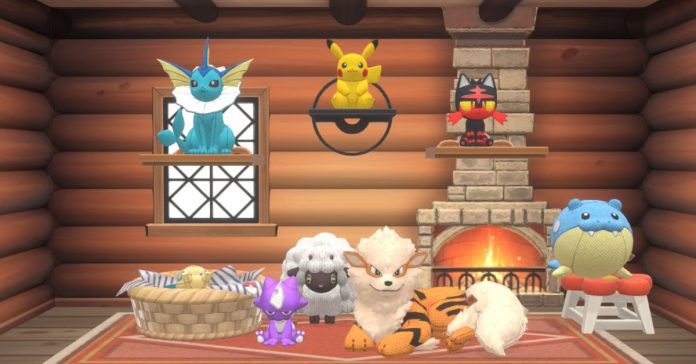A brand-new game was announced during today’s Pokémon Presents stream, but it most certainly wasn’t one you were expecting. Rather than unveiling a new mainline entry or Black and White remakes, the franchise’s latest entry is Pokémon Friends. It’s a small-scale puzzle game built for mobile devices and Nintendo Switch that sees the series continue its confident march into full-scale edutainment territory. And just like Pokémon Sleep before it, that’s a charming turn that comes at a surprising cost.
Pokémon Friends is essentially Big Brain Academy with pocket monsters. Each day, players get a set of three puzzles that can be quickly solved with touch controls and gyroscope support in some cases. Each puzzle is lightly themed around a Pokémon. Pikachu’s puzzle asks you to connect a board of lightbulbs in one line. Makuhita’s Might Moves is a classic Strength puzzle, in which you’ll have to move boulders in the right order to reach a flag. They’re all very basic, with a trio of puzzles only lasting up to two minutes.
If that sounds a little simple, that’s because Pokémon Friends is likely the most clear-cut children’s game that The Pokémon Company has ever made. It’s a piece of edutainment, with minigames that have players counting how many Froakies are standing around a grid or deducing what shape an object will become once Greninja cuts it in half. The challenge comes when puzzles you’ve already played reappear and bump up a difficulty level, turning them into better brain games.
The prize for doing what’s ostensibly homework? Colorful yarn that can be turned into Pokémon plushies. That’s where the series’ signature collecting comes into play, as each type of yarn can produce different Pokémon. Those can then be used to decorate a little bedroom and given away to fulfill quests and obtain furniture, giving the package a light cozy game appeal. It is the ultimate iPad baby game, full of bright colors, cute Pokémon, and educational logic puzzles.
This isn’t new for Pokémon; in fact, the series has been marching towards this for the past few years within the mobile realm. Pokémon Smile gave parents a handy app that made toothbrushing more fun for kids, while Pokémon Sleep successfully gamefied naps. Pokémon Friends is the next step in that evolution, turning the series into a full-on lifestyle brand for kids who still aren’t old enough to grasp even the easiest RPGs.
As much of a no-brainer as that idea is, Pokémon Friends does come with some major caveats for parents that bring The Pokémon Company’s ability to make responsible edutainment into question. Pokémon Friends is free to download on mobile (there’s no free tier on Switch), and that will net you 10 puzzles and a daily challenge. You can add 20 more puzzles and lift the daily restrictions for $10, allowing you to play as many sets of puzzles per day as you want. It will cost $15 to add new packs. Two extra packs are available at launch, and there’s a $34 bundle if you want to buy them all together. Thankfully, those seem to be the only microtransactions here, and they’re far less egregious than Pokémon Sleep’s resource money pit, but they leave me uneasy in a different way.
Pokémon Friends is a baby’s first gacha game. When you create a plush, you’re essentially doing a pull. There’s even a pop-up that shows the rates for different Pokémon that can be created with each type of yarn. Below that, you’ll find a red button labeled “Warning.” It explains that buying more DLC will add more yarn and Pokémon to the pool, decreasing the odds that others will be obtainable via pull. So buying an add-on pack doesn’t just give your kid more brain games; you’re putting more toys in the slot machine.
Pokémon Friends still does the right thing by not putting in time gates that can be bypassed with resources, nor does it allow players to buy yarn outright. There’s even a deeply silly layer of childproofing in the shop, as you’ll need to solve a math equation to confirm a purchase. As far as microtransactions go, a one-time $34 upcharge (more if you buy all the DLC separately) feels more acceptable than a $100 resource bundle meant to be purchased again and again.
Still, I can’t help but feel uncomfortable every time I make a cute doll by pulling a literal slot machine handle on the Plush-o-matic (the series has a very long history of including actual slot machines in games, starting with the very first RPGs). That part is going to be the draw for kids, and the paid add-ons only give them more reasons to pull the lever. Even if that’s only a prize locked behind math puzzles and spatial reasoning games, is that really the best digital teaching tool we have these days?

